Lone Eagle Brewing owner Bob King still remembers the first time he opened his Flemington brewery’s doors nearly a decade ago.
After taking just two days off in six months to ready Long Eagle brewery for opening, he was physically, mentally and emotionally exhausted. He doubted if all of his 16-hour days and monetary investment would be worth it.
But when he unlocked the brewery doors and was greeted by a tiny, wrinkled woman, all those fears sloshed away.
“This elderly woman gives me a big hug and says, ‘I don’t even like beer but I’m going to buy one every week to keep you guys in business,’ “ King recalled. “My heart just melted and I wanted to cry. I said, ‘I love you.’ “
Former USA TODAY Restaurant of the Year in Hunterdon County closing next monthCheck out the all new PLAY hub with puzzles, games and more!Flemington’s historic Union Hotel reopening soon. 'We are going to activate Main Street’
Weekly beer purchases by an octogenarian weren’t needed to keep Lone Eagle Brewing’s taps flowing. The brewery on Stangl Road is one of the oldest and most popular in Hunterdon County.
But soon, it will continue its hoppy tenure under a new steward because King is looking for a new owner. The taproom will remain open throughout the transition.
He has already received more than two dozen inquiries and is in talks with several of the potential buyers. However, inquiries are still being accepted. Those who are interested can contact former Lone Eagle Brewing co-owner Todd Becker at [email protected], who retired earlier this year.
“This was a bittersweet decision,” King said. “But next year my wife and I are hitting retirement age and our 10-year lease will be up, so all the planets are aligning for this to happen.”
Calling King’s exit a retirement is a bit of a stretch.
King is a member of the Raritan Township Committee and serving as mayor this year, with his Committee term expiring at the end of 2027. With an engineering and IT background at AT&T and Merck, he also owns a software company, which he used to run beer production and sales at Lone Eagle Brewing.
“This is not what you would call retirement,” King said. “I fear the day when I can’t see the screen and my fingers can’t type keys. That’s the day that worries me.”
When Becker had an idea to open a brewery, he called up King, who he has known for 30 years. King, a homebrewer who had recently been laid off from Merck, dipped into his severance package to invest in the brewery.
5 spots loved by locals for stiff drinks and good times
They opened Lone Eagle Brewing in 2016 and named it after Charles Lindbergh’s “Lone Eagle” nickname. Lindbergh’s Hunterdon County roots run deep. When his son was kidnapped from his East Amwell home, the trial of Bruno Hauptmann was held at the local Historic Hunterdon County Courthouse in what was called “the trial of the century.”
The brewery started with eight beers on tap. Now, it keeps a wide variety of 16-18 beers on tap, available in flights, pints, 32- and 64-ounce growlers, 32-ounce crowlers, bottles and four-packs. Beer is savored among a robust entertainment schedule including trivia nights, beer dinners, live music, paint nights, chess tournaments and more.
Fun and beer is served up in a 5,000-square-foot tasking room with an 1,800-square-foot loft, filled with bars hand-built by King and Becker and tables and benches made with Hunterdon County reclaimed wood by Hunterdon County Polytech students.
“This grew into so much more than I ever imagined,” King said. “We have helped bring Flemington to life and we have watched the community develop around this and established so many friendships. It’s been a labor of love.”
Contact: [email protected]
Jenna Intersimone has been a staff member at the USA TODAY NETWORK New Jersey since 2014, although she's a lifetime Jersey girl who considers herself an expert in everything from the Jersey Shore to the Garden State's buzzing downtowns. To get unlimited access to her stories about food, drink and fun, please subscribe or activate your digital account today. You can also follow her on Instagram at @seejennaeat and on Twitter at @JIntersimone.

 908-484-1600
908-484-1600




 Service Areas
Service Areas























